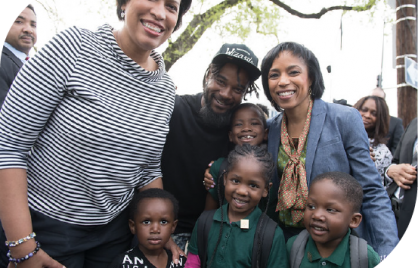
Because we only participate once each decade, it may seem as though the census has little personal connection for us individually. But by counting every resident in the U.S., the Census paints a picture of who is living here, what services are needed, which programs should be prioritized, how representation should be allocated and funds distributed. Here are five uses of census data for our government, local communities, education, health care, and businesses.
- Representation
Census data informs apportionment—the process by which the number of seats each state holds in the House of Representatives is determined. Apportionment of those 435 seats is one of the primary reasons that our Constitution mandates a decennial census. Within 9 months of the census, the apportionment population counts for each state are delivered to the President who will then report the counts to the House of Representatives. In DC, the 2020 census data will be used to redraw Ward and ANC boundaries in 2021.
- Health Care
the census also helps the government address complicated healthcare needs by allocating funding for programs that support aging adults, mental health and disabilities, healthcare for children as well as Medicare and Medicaid. Healthcare researchers rely on data to track changes to populations over time.
- Education
A diverse population requires different educational programs and services. Census data informs support for special education, Headstart, grants and programs as well as districting, public-school funding and long-term planning for school construction
- Workforce
Which jobs should your community invest in? What types of vocational training does your city need to properly support the workforce? Census data measures the size of the workforce, unemployment levels. It creates a picture of occupation, industry and class as well as commuting behavior, all of which inform the creation of community services and programs.
- Funding
Each year, the government distributes more than $675 billion to local, state and tribal governments. The census not only determines how the federal government distributes that sum but also how local governments then allocate their allotment for public health, education, transportation, community improvements and more.

